Aft Led Lines Follow-Up (Progress - Part 1 of 4)
I've added some of the aft-led lines and deck hardware earlier in the season, but am just now getting around to posting about it.
Some brief highlights of the things I did:
1. CAREFULLY removed the headliner (though I did make 1 cut that I'll replace with a zipper to get around the mast, but I don't see this as such a bad thing for future access)
2. Over-drilled each thru-deck hole from the bottom side with a 1-1/8" hole-saw (after drilling a pilot hole from the topside, after marking the hardware location), checked the deck plywood laminate for moisture (yes, there were a few moist areas...

, but I'll address that later), and filled with West Systems 406 filler thickened epoxy (for what it's worth I used fast-cure hardener). I then re-drilled from the topside for hardware mounting.
3. Used butyl tape for sealing rather than a 3M product. I basically used these instructions:
http://www.pbase.com/mainecruising/rebedding_hardware
4. Utilized Lewmar rope clutches due to feedback from several area racers, plus the price is on-par if not cheaper than several competitive products and I was able to take advantage of a friend's marine store discount. The way they operate as compared with a cam clutch is really impressive and does appear to both reduce line wear and allows easy release of the line under just about any load (and this one I can confirm). I've also found they can be 'feathered' fairly well to loosen things just slightly if needed (halyard tension, etc). Being an engineer I found them fairly nifty as compared with other clutches.
Ok, now onto the nitty-gritty:
First, I laid-out all of the deck hardware with lines running through them and various volunteers (chiefly my dad and myself) holding hardware while keeping lines taught in order to ensure proper routing, cut half-angles with lines for the deck organizers, ensure straight shots into the rope clutches and the best average wrap over a winch (since some lines will be angled over to be able to be winched in). I just used a sharpie to mark the deck since at some point the deck will be painted, just not yet (also, my deck is so chalky even the permanent marker was removed with the first washing):
Here's is the deck organizer:
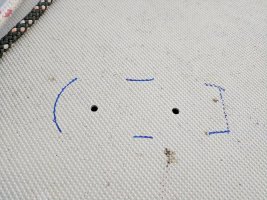
Here's the new main-sheet winch:
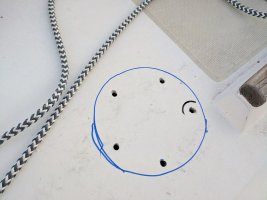
Also included were a bank of 5 rope clutches on the Port side for:
1. Main Halyard (8-10mm)
2. Port Spin Halyard (8-10mm)
3. Center Jib Halyard (8-10mm)
4. Topping Lift (6-8mm)
5. Downhaul (6-8mm)
Technically this is a gang of 3 directly next to a gang of 2, due to differing line diameters as indicated above in parentheses.
On the Starboard side I marked out for a bank of 3 rope clutches for:
1. Starboard Spin Halyard
2. Boom Vang
3. Cunningham
As mentioned in the cliff-notes version above, I ensured all lines ran freely and that the half-angles of the lines leading through the deck organizers averaged out. I also used all ball-bearing sheaves and torlon balls with any of the halyard sheaves (as recommended by Garhauer due to loading).




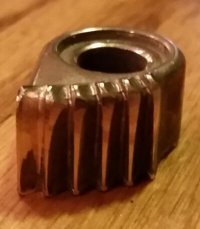

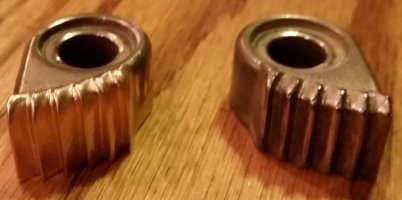
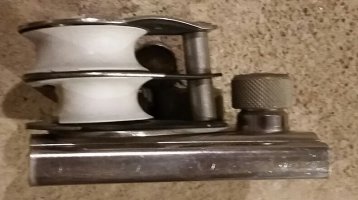
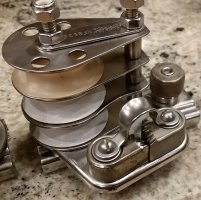
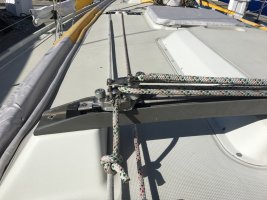

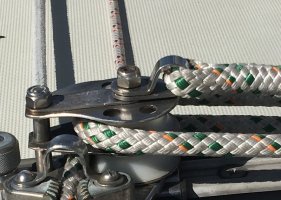
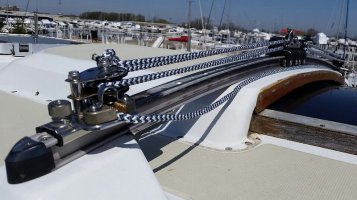
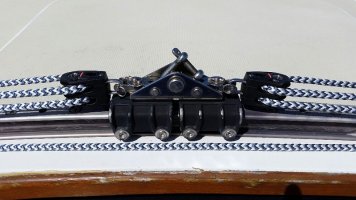

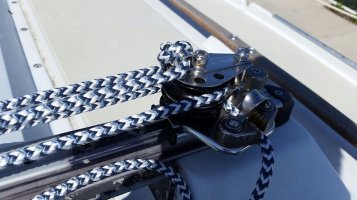
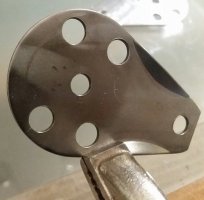
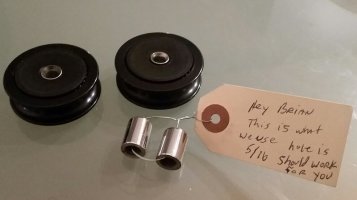
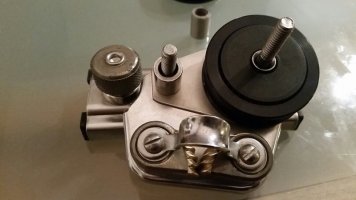
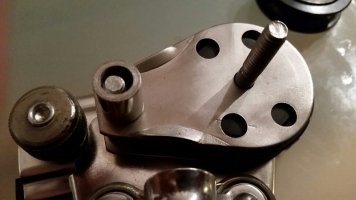
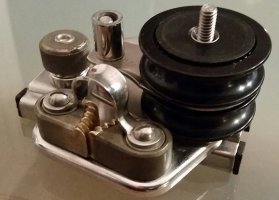
 , but I'll address that later), and filled with West Systems 406 filler thickened epoxy (for what it's worth I used fast-cure hardener). I then re-drilled from the topside for hardware mounting.
, but I'll address that later), and filled with West Systems 406 filler thickened epoxy (for what it's worth I used fast-cure hardener). I then re-drilled from the topside for hardware mounting.
